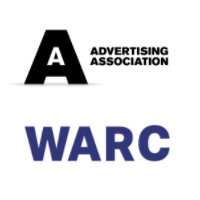Record 2019 UK Adspend Forecast to Fall 16.7% (£4.23bn) to £21.13bn in 2020
by on 30th Apr 2020 in News

The latest Advertising Association/WARC Expenditure Report, released today [20 April 2020] shows UK adspend rose 6.9% year-on-year to reach £25.36bn in 2019 – the tenth consecutive year of ad market growth. Despite 2020’s promising start in Q1, the downgrading of projections for the rest of 2020 and 2021 demonstrate the deep impact that COVID-19 has had on advertising since mid-March, as it has the UK economy as a whole.
Projections prior to the COVID-19 outbreak forecast adspend growth in 2020 of 5.2% to a total of over £26bn. The revised forecast is for advertising expenditure of £21.13bn meaning a year-on-year reduction of 16.7% – or £4.23bn – from 2019. Adspend is expected to return to growth in 2021 with a rise of 13.6%, but absolute levels of investment are not expected to surpass the 2019 total.
The data tables show online and digital formats performing strongly during the past year and they are forecast to decline by less than traditional formats over 2020. Search and online display grew by 17.8% and 17.4% respectively in 2019 but are predicted to fall by 12.1% and 12.7% respectively this year. Video on demand (VOD) recorded growth of 15.5% in 2019 but, overall, TV saw a decline of 3.5%. Both are expected to be affected by the downturn this year, with TV forecast to see a 19.8% dip in advertiser investment and VOD a 6.3% fall. Both are expected to rebound in 2021, with TV expected to grow 15.0% and VOD an increase of 21.9%.
The ongoing decline in publisher revenue that was recorded in 2019 is expected to intensify this year, with decreases of 20.5% for national newsbrands, 24.1% for regional newsbrands, and 25.1% for magazine brands. All are then expected to record growth in 2021.
Given the restrictions on population movement and gathering ordered by the Government, formats including out of home and cinema are expected to see large falls in adspend in 2020, with growth projections at -18.7% and -33.6% respectively. However, both are forecast to record some of the largest gains in 2021, with digital out of home (DOOH) seeing a rise of 21.4% and cinema witnessing the highest increase of all formats at 39.9%.
Stephen Woodford, Chief Executive, Advertising Association commented: “Despite a good 2019 and promising start to 2020, COVID-19 has affected UK advertising as it has all parts of the economy and the falls we are seeing in adspend come as little surprise. The current quarter will be a tremendously tough time for many businesses across our industry. We are acutely conscious of their predicament and working fast with Government and officials, so that they get the best support possible.
“Instinct might tell businesses to be cautious in their advertising at this time and we all need to be mindful of the unusual times we’re living in. But at the same time, the importance of advertising during a downturn cannot be overstated. The vast majority of adspend, nearly 85%, will still be invested this year and businesses should ensure they are in the best possible place – and best possible shape – to take advantage of a return to growth when it comes. History shows the brands that emerge fastest and strongest are those that invest in advertising during a downturn.”
James McDonald, Head of Data Content, WARC commented: “This virus-induced recession is different to previous downturns in that the impact has been both swift and sharp across all media. The deterioration of advertising trade, we believe, will be focused primarily in the second and third quarters of this year, though the aftershocks are likely to last into the fourth quarter and early 2021. The small and medium sized enterprises for whom digital advertising is a staple are particularly vulnerable during the lockdown period, and their recovery is expected to be protracted thereafter.
“Media costs have fallen as a direct result of lower demand for inventory and this, paradoxically, comes at a time when consumption and reach has grown markedly across TV, social media and online publications. Research on WARC from multiple sources shows that cutting advertising in a recession directly correlates with a slower recovery, but the practicalities of marketing in the current climate mean sustained investment is simply no longer feasible for a number of large product sectors.”
The UK advertising industry response
Countering the fall in activity that is being witnessed across all sectors of the economy requires concerted effort and the Advertising Association is working with partners across advertising on innovative plans to boost adspend and reactivate growth in the market. Advertising is a proven driver of economic growth in the UK, with every £1 invested returning £6 to GDP and 1m jobs depend on advertising. These efforts will build on UK advertising’s strengths as a global hub, its status as the world’s most awarded advertising territory for creative excellence, as well as being its most advanced digital advertising marketplace.
• One of the actions being called for is a tax credit scheme for advertising and marketing services, with the aim of stimulating investment and encouraging advertisers to continue, or return to, advertising. Such a plan would also encourage companies that do not currently advertise, typically SMEs, to invest in advertising. It would also act as a stimulus for the wider economy and provide a welcome boost in investment for British commercial media. In 2019, consumer spending accounted for two thirds of UK GDP and so encouraging consumer confidence through advertising would be boost to the national recovery.
The Advertising Association is also calling for other measures to rebuild confidence in the market, for example:
• Providing a phased-down extension of the Job Retention Scheme when lockdown ends, to avoid a wave of redundancies by companies with cashflow problems.
• Priority should be given to the advertising production sector, to allow it to start up again as soon as possible and to ease its transition from lockdown. Production has virtually stopped and by its nature it requires human presence so there will need to be new arrangements around social distancing.
• Government to provide support in the credit insurance markets to ensure that cover limits offered to agencies are sufficient to allow all those UK advertisers who want to advertise to do so without constraint in this respect.
The Advertising Association welcomes the Government’s announcement on Monday, April 27 on Bounce Back Loans which will help keep small businesses afloat. The AA would also like to see an extension of the business rates relief to the advertising sector, and relief on commercial rents for tenants.
Data tables


Selected media at-a-glance
Paid search: The sector is heavily relied upon by SMEs whose ad budgets have been tightened severely, while performance marketing is no longer practical for a number of product verticals including tourism, leisure and entertainment. We expect investment to fall by 12.1% to £7.0bn this year versus a previous forecast of 10.1% growth.
Online display: The majority – 57% in 2019 – of online display investment is directed towards social media platforms which are now also exposed to the downturn. The online display market as a whole is forecast to contract by 12.7% to £5.5bn this year, with social media down by 6.3%. As with paid search, this would be the first recorded fall in the online display market and equates to a total £1.16bn lower than that forecast in January.
Television: Data from BARB and Thinkbox show live TV viewing has grown by 22.7% on average since 9 March, but the TV ad market is forecast to contract by almost a half in the second quarter. While CPM projections from ECI Media Management show costs falling by a fifth in 2020, the full year forecast for TV ad investment growth is now -19.8%, equivalent to a £976m reduction in broadcaster revenue versus 2019.
Out of home: The out of home sector is among the most directly affected, with lockdown restrictions severely impacting reach. Research by Kinetic – based on measurement of device traffic in OOH locations – shows a 76% reduction in roadside impressions during the week commencing 6 April. The OOH ad market is expected to contract by a half (52.6%) in Q2 2020, a quarter (24.5%) in Q3 2020, and 18.7% during 2020 as a whole.
National Newsbrands: Visits to premium UK newsbrands are up by between 30% and 60%, according to industry body Newsworks, but this has not translated into rising advertising investment, partially because many brands are blacklisting COVID-related keywords when buying audiences. Advertising revenue among publishers of national news is expected to fall by 20.5% – or £206m – in 2020, compared to the 3.3% decline forecast in January.
Cinema: All cinemas have temporarily closed while lockdown conditions are enforced. We remain hopeful that restrictions are able to be lifted in the second half of the year – aiding a 2.1% rise in cinema adspend in the fourth quarter – but our current projections do not account for this happening before July. As a result, the cinema ad market is expected to contract by 33.6% – or £105m – this year.
Ad SpendAd TechCross-ChannelDisplayMobile








Follow ExchangeWire